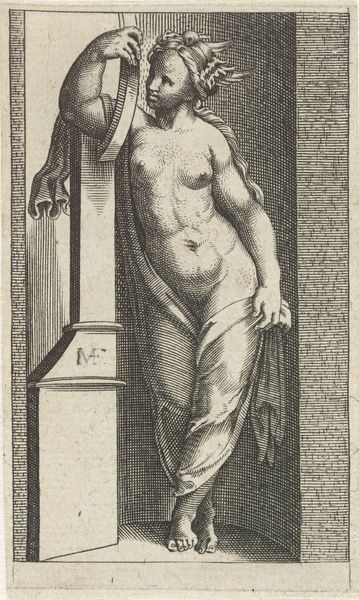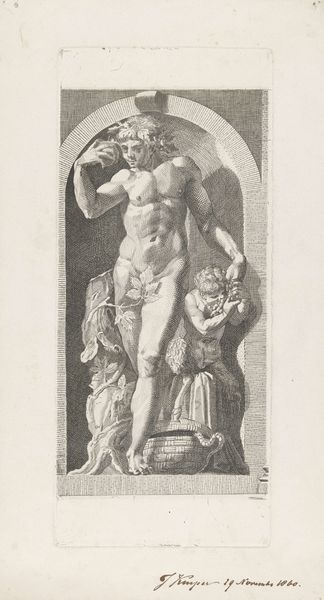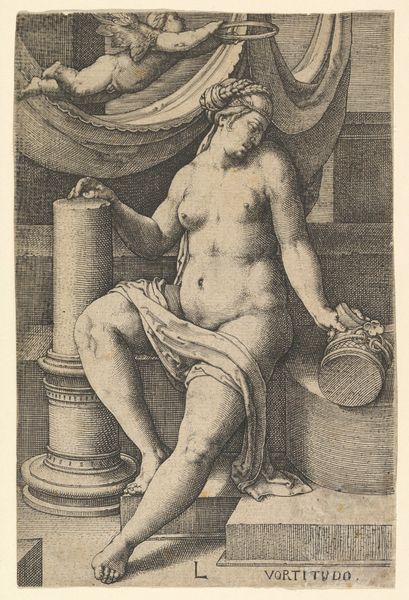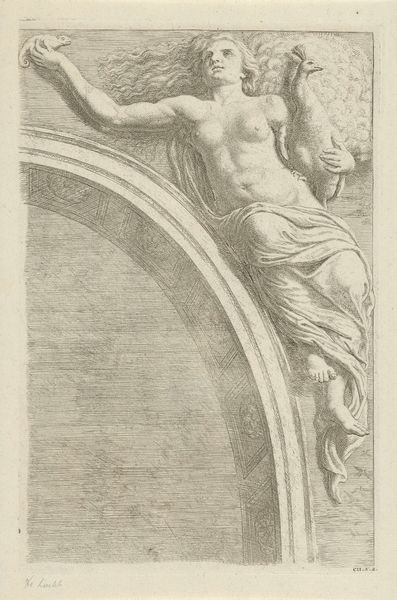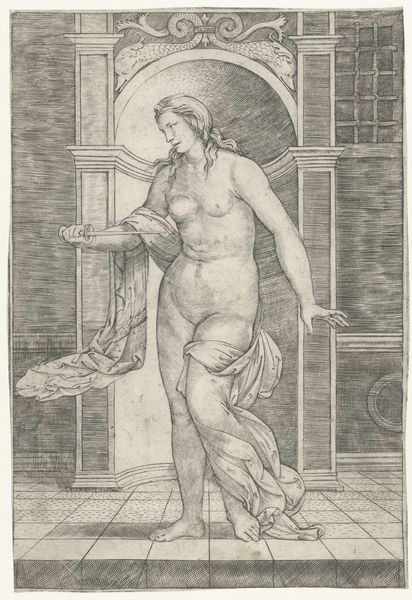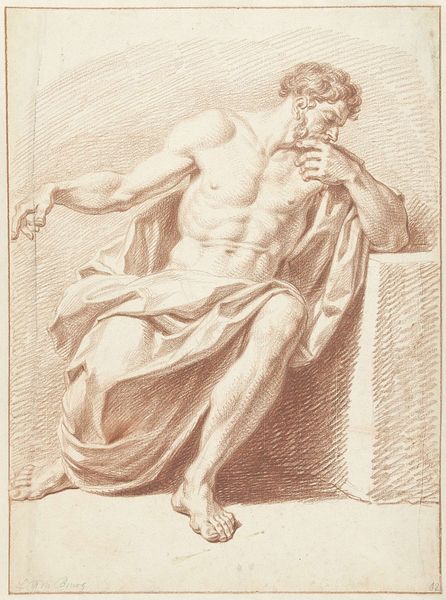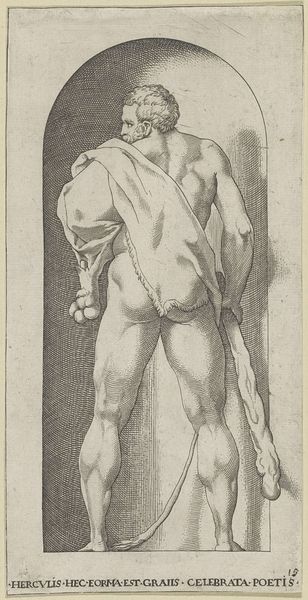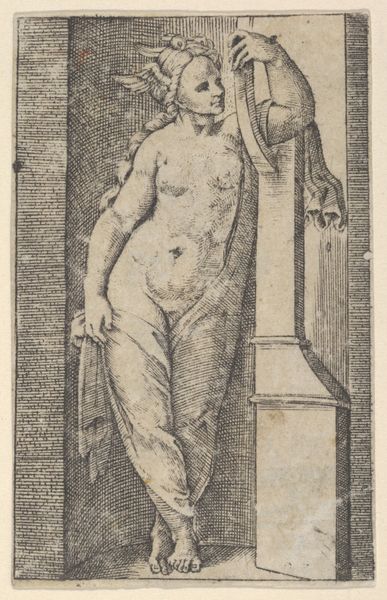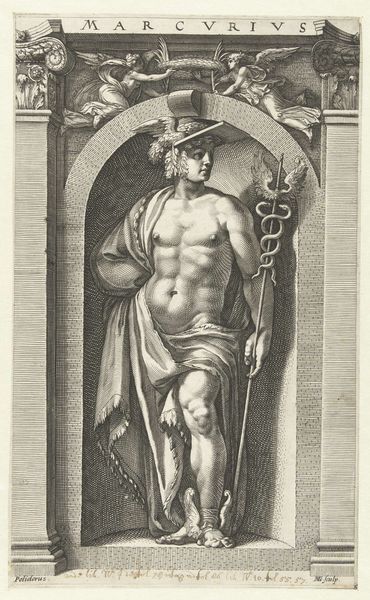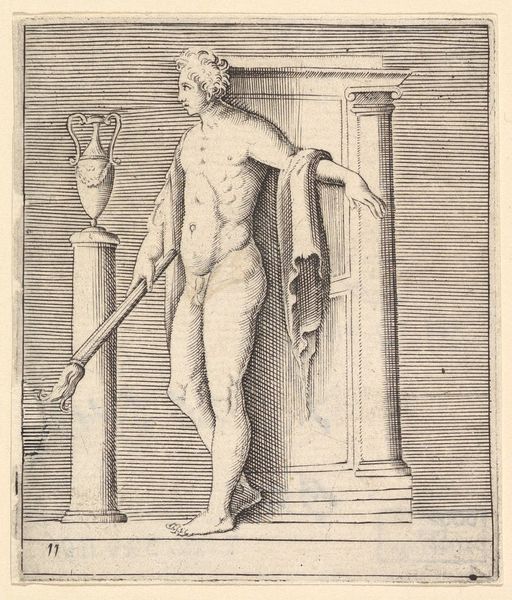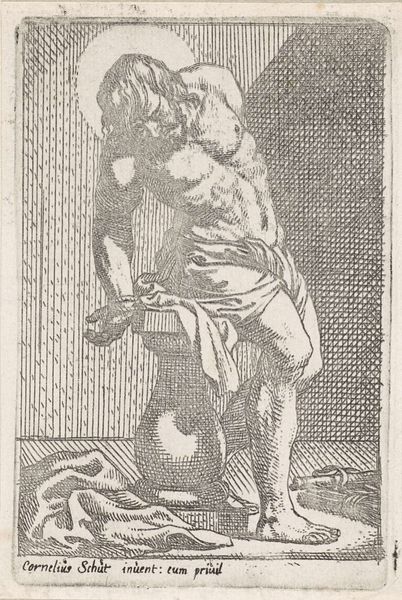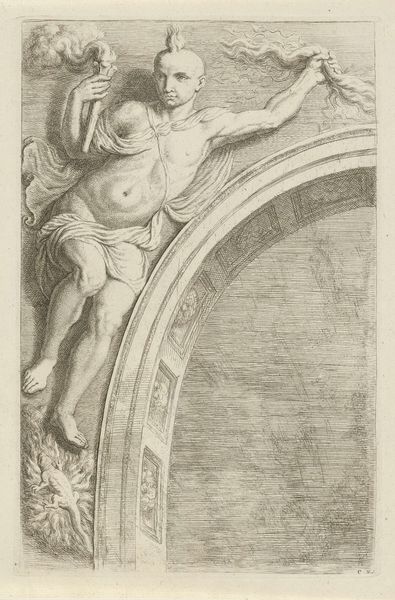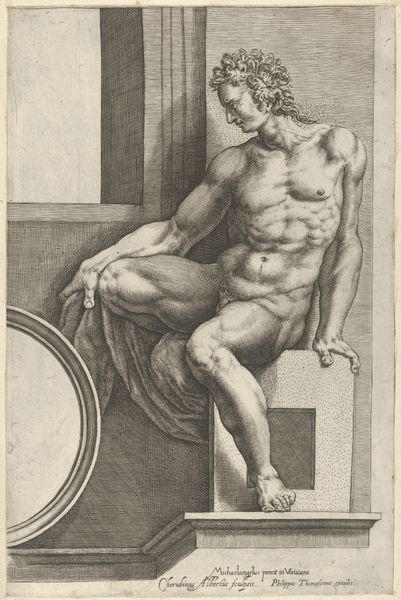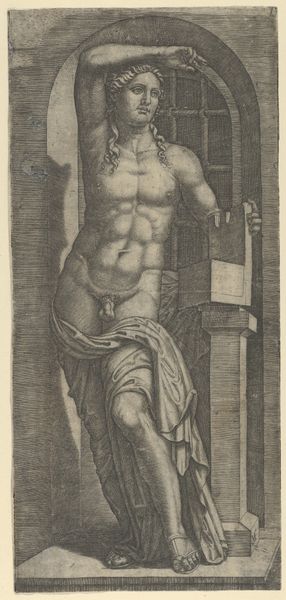
drawing, print, engraving
#
drawing
# print
#
figuration
#
11_renaissance
#
female-nude
#
northern-renaissance
#
nude
#
engraving
#
male-nude
Dimensions: sheet: 6 7/16 x 4 1/4 in. (16.4 x 10.8 cm)
Copyright: Public Domain
Curator: Looking at this piece, I immediately see the weight of religious symbolism, quite literally in how Lucas van Leyden portrays “Faith”. There’s a softness to the figure, but a strength implied in her grasp. Editor: I find it interesting to think about how that strength emerges materially. As an engraving from 1530, this piece embodies faith in production as much as concept. Van Leyden had to master the demanding and physical act of metal engraving to even render this image. Curator: Precisely! See how Faith holds the chalice and wafer, symbols of communion and spiritual nourishment? And next to her a cross looms—instruments of Christ's sacrifice, underscoring her role as a vessel of devotion. Even the small angel hovering above reinforces the divine support for her steadfastness. Editor: And consider the cultural context that allows for such craftsmanship. Think about the labor hierarchies inherent in the production and dissemination of prints like these in the 16th century, where the making and selling of "Faith" hinged upon existing societal norms. These aren’t mass-produced, they speak to a network of skills and trades. Curator: Very true. Beyond its material existence, though, consider how the nudity amplifies vulnerability and truth. Faith is stripped bare, exposed, yet remains steadfast in her convictions. It taps into deep-seated visual languages associated with innocence and divine grace. Editor: But the question arises: Who consumed this imagery? It probably found an audience across different social echelons, and how their gender, class, and religious views influenced the meaning and usage they attached to these emblems. Was "Faith" merely an image of inspiration or something that held economic and cultural value for them too? Curator: Absolutely! And don’t forget that such accessibility to religious imagery, rendered in the form of these engravings, could serve as tools of indoctrination and rebellion, potentially democratizing access to potent theological symbols and questioning established religious interpretations. Editor: Seeing how you unpack the work’s meaning via iconography adds a level of historical awareness. Understanding how the figure functions materially reminds us how deeply these engravings were interwoven with societal frameworks—linking the artistic vision to economics. Curator: Ultimately, revisiting these works through different lenses strengthens our connection to history and gives the image lasting cultural importance. Editor: Yes, together, looking at the material conditions of its making alongside the visual codes illuminates how intertwined early modern society's devotional objects truly were with power.
Comments
No comments
Be the first to comment and join the conversation on the ultimate creative platform.
